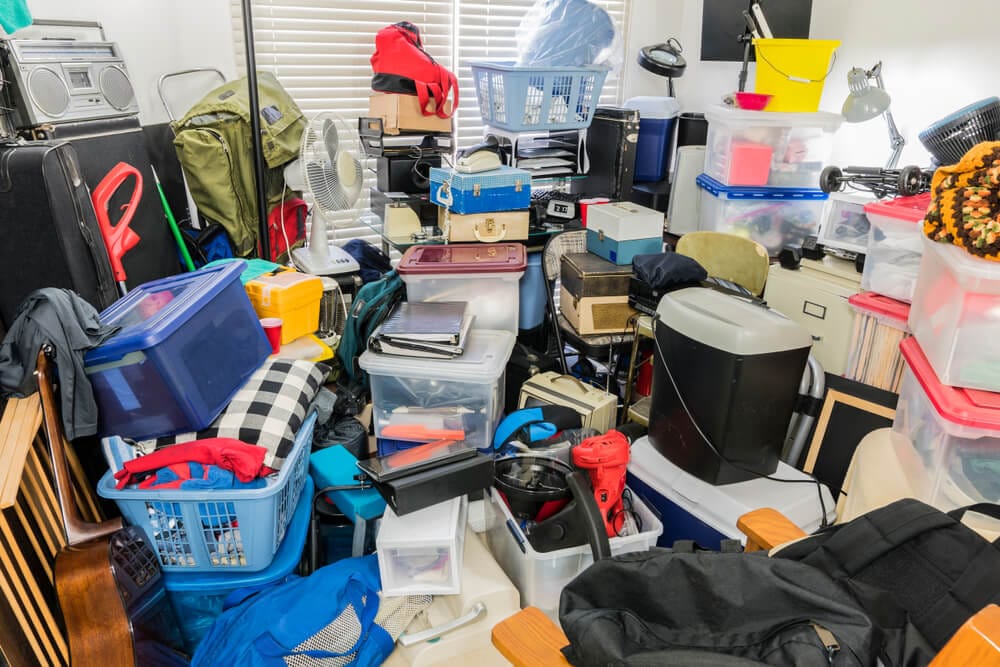Alright, let’s talk about something tough. Dealing with a hoarder family member. Yeah, it’s a heavy one, and I’ve been right there in the thick of it. It’s not like what you see on TV, all neat and tidy by the end of the hour. It’s messy, it’s frustrating, and it’s a long, long road. So, I’m just gonna share what I went through, what I tried, and what I learned. Maybe some of it helps you, maybe it just makes you feel less alone. Either way, here’s my story.

The “Oh Crap, This is Serious” Moment
For years, I just thought my [family member, let’s call him Uncle Joe, for simplicity] was just a bit eccentric, a collector, you know? His place was always cluttered. But then came the day I really saw it. I had to go over for something, can’t even remember what now, and I could barely get in the door. Stacks of newspapers to the ceiling, pathways carved through… well, junk. Old food containers, clothes he hadn’t worn in decades, just… stuff. Everywhere. That was my wake-up call. This wasn’t just “messy.” This was something else, something bigger and scarier.
My First Brilliant (and Failed) Ideas
So, what did I do? Like a bull in a china shop, I decided I was going to “fix” it. My first grand plan: a surprise clean-out while he was away for a weekend. Big mistake. Huge. I thought I was helping. He came back, and it was like I’d personally attacked him. He was furious, devastated, and honestly, I felt awful. All that work, and within a few weeks, it started piling up again, maybe even worse because he was more secretive about it.
Then I tried arguing. Pleading. Reasoning. You name it. “Joe, this isn’t safe!” “Joe, you don’t need all this!” It was like talking to a brick wall. He’d get defensive, angry, or just shut down. We had some epic fights, let me tell you. Got us absolutely nowhere. Stress levels through the roof for everyone involved.
Figuring Out What This Really Was
I was at my wit’s end. I started reading, just anything I could find online, late at night when I couldn’t sleep. Stumbled across the term “hoarding disorder.” And a lot of lightbulbs went on. It wasn’t about being lazy, or dirty, or deliberately difficult. It was a mental health thing. A really complex one. That changed things for me. Didn’t make it easier, not by a long shot, but it shifted my perspective. I was dealing with an illness, not just a stubborn old man.
New Tactics: Slow and Steady (and Painful)
So, I had to change my approach. This wasn’t a sprint; it was a marathon. Or maybe one of those ultra-marathons where you mostly just suffer. Here’s what I started doing, bit by bit:

- Safety First, Always: This became my mantra. Forget about making it pretty. Was it a fire hazard? Were the exits blocked? Was there rotting food attracting pests? We (and by “we” I mostly mean me, with his reluctant, grumbling agreement sometimes) focused on the absolute critical safety issues first. Small, targeted strikes. “Okay, Joe, today we just clear this path to the back door.” Still arguments, but the “this could save your life” angle helped a tiny bit.
- One Tiny Bit at a Time: No more giant clean-outs. That was too overwhelming for him (and frankly, for me too). We’d pick one small box, one tiny corner. “What about these old magazines, Joe? Can we look through just this pile?” Sometimes he’d let go of one or two things. A monumental victory, believe me.
- Talking, Not Accusing: I tried, really tried, to change how I talked to him. Less “You have to get rid of this!” and more “I’m worried about you when I see this.” or “What does this item mean to you?” Didn’t always work, he still clammed up a lot, but sometimes he’d share a story, and it helped me understand the attachment, even if I didn’t get it.
- Harm Reduction, Not a Cure: This was a big one for my own sanity. I had to accept I wasn’t going to “cure” him. The goal became making his environment safer and a little more manageable, not making him a minimalist. Lowering my expectations was key to not losing my mind.
- Setting Boundaries (for Me): I had to learn to step away. I couldn’t be there 24/7, and I couldn’t let his hoarding consume my entire life. I’d set times to help, and then I’d leave. I also had to be firm about not bringing more stuff into my house for him. That was a hard line.
Professional Help? Well…
Did we get professional help? We talked about it. I researched therapists specializing in hoarding. But Joe was completely resistant. The idea of a stranger coming in, judging him, telling him what to do… it was a non-starter for him. Maybe if the situation had been different, if he’d been willing, it might have helped. But you can’t force someone into therapy. So, we muddled through mostly on our own, with support from other family members who were also worried.
Where We Are Now
So, is Uncle Joe’s place a sparkling minimalist haven now? Absolutely not. It’s still cluttered. He still hoards. But it’s… better. Safer. We have clear pathways. The worst of the hazards are managed. He even, occasionally, initiates getting rid of something himself. Tiny baby steps.
It’s an ongoing process. Some days are good; some days I see a new pile starting and my heart just sinks. It’s emotionally draining. It’s frustrating. But I’ve learned to focus on the small wins, to keep the lines of communication open (even when it’s hard), and to look after my own well-being through it all. It’s not a success story in the traditional sense, but it’s a story of trying, of learning, and of finding a way to manage an incredibly difficult situation with someone you care about. If you’re going through this, just know you’re not alone, and be kind to yourself. It’s a tough gig.










